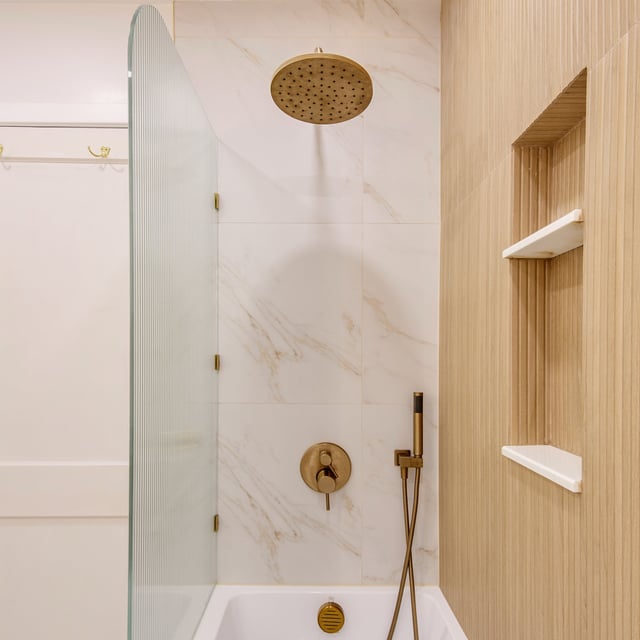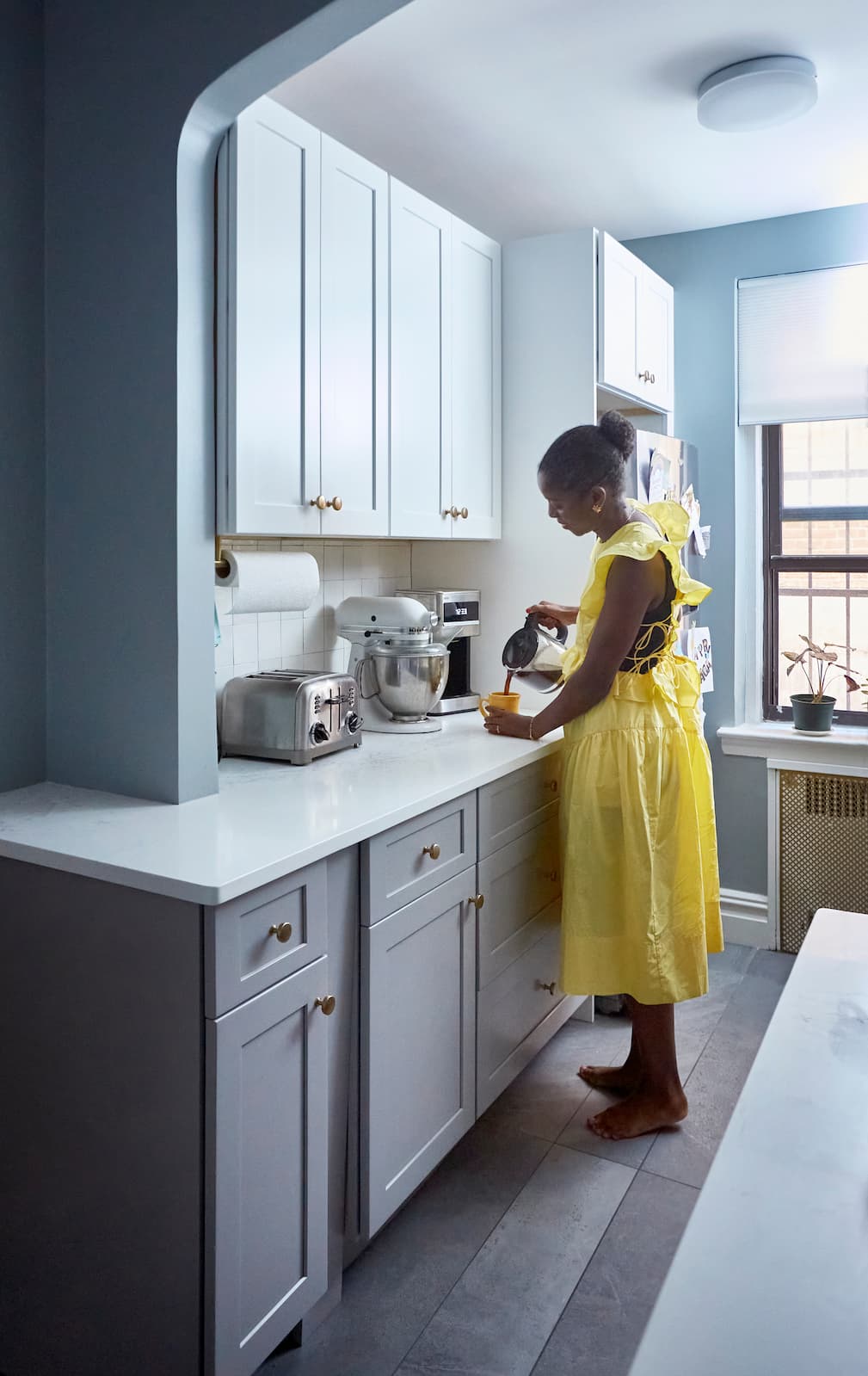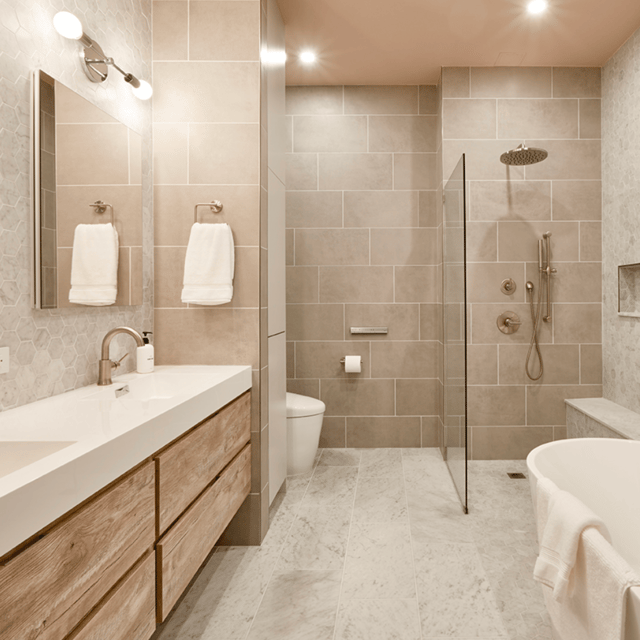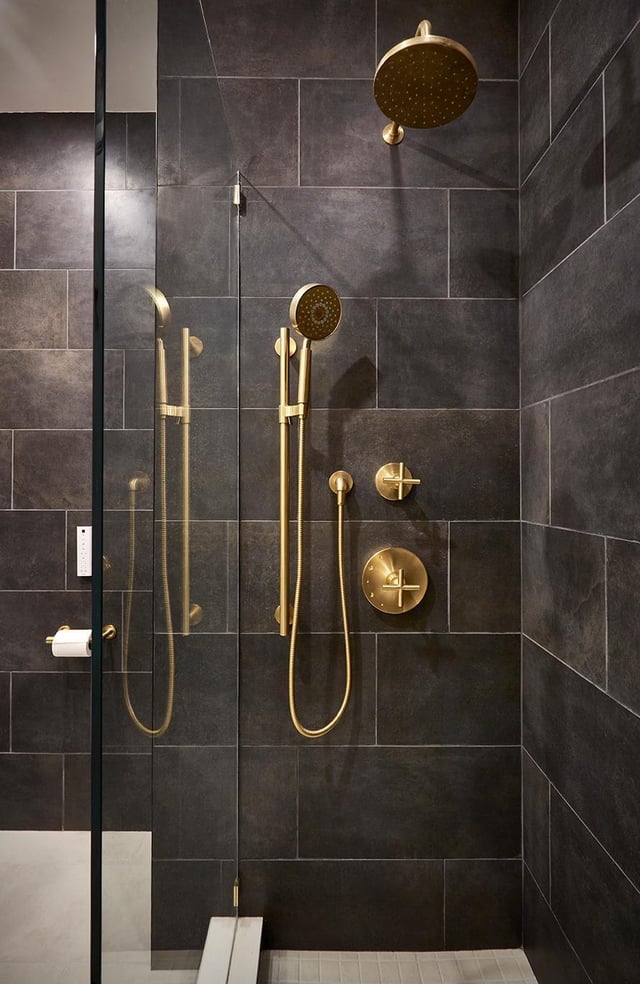
Bathroom
Eco-Friendly Shower & Bathroom Ideas
12.23.2025
Our New Year savings event is here: Get up to $6,500 off your project today (terms apply).


In This Article
When you remodel your bathroom, you’re reshaping how your day begins and ends. The right layout, storage, and finishing touches can make routines smoother and your space more comfortable, down to the smallest details. These bathroom remodel tips are designed to help you plan with clarity and make choices you’ll appreciate long after the dust settles.
A well-planned layout can help your bathroom feel open and intuitive, even in tight quarters.
A bathroom can look beautiful on day one—but if it’s hard to clean, that polished look won’t last. By planning for easy maintenance from the start, you’ll spend less time scrubbing and more time actually enjoying the space. Here are a few practical ways to make that happen:
For more helpful remodeling tips, check out Ideas for Easy-to-Clean Bathroom Tiles, Shower Doors, & Design.
A bathroom should suit what you actually love—whether that means a brisk shower, a long soak, or both. If you’re happiest under a strong shower, consider adding a hand shower on a sliding bar, a well-placed bench, or even a rain shower head.
One piece of advice that is often overlooked? Pay attention to depth, length, and the angle of the backrest. For families or households with different bathing preferences, it’s often possible to include a functional, beautiful shower and a dedicated soaking tub, as long as you plan for plumbing and space at the start
Not every upgrade has to be grand to be worth it. The right little luxuries—especially on cold mornings or long days—can quietly elevate how your bathroom feels and functions. Consider which ones will matter most to you, day in and day out.
Bring Your Dream Bathroom to Life

The right storage isn’t about shelf count; it’s about your daily routines. Take stock of your habits and what needs a home. Think beyond the medicine cabinet: deep vanity drawers with dividers are perfect for bottles and hair tools, while a tall cabinet close by can house backup supplies or towels. Consider building outlets inside drawers or cabinets for electric toothbrushes and shavers, so you keep counters clear.
In the shower, niches should be tall enough for your largest product and ideally positioned at a comfortable height. A small shelf near the toilet or entry is great for everyday essentials—proving that even the tiniest storage can keep clutter away.
Remodeling is your chance to tell your story. Start with a detail that feels authentic—maybe a deep green vanity, matte black hardware, or a striking patterned floor tile. Pair those standout pieces with a subtle, consistent backdrop so nothing fights for attention. Mixing metals can make the room feel lived-in and current, but limit yourself to two finishes and repeat each at least twice for a sense of calm. Play with textures—a ribbed glass door here, a smooth stone counter there—for depth and interest.
Looking for inspiration? These guides can help:
Renovate with confidence every step of the way
Step 1: Personalize Your Renovation Plan
Step 2: Receive Quotes from Trusted Contractors
Step 3: Let Us Handle the Project Details

A quick inspection before you begin can spare you a lot of future headaches. You don’t want to patch over structural issues or hidden leaks—those can pop up again when you least expect it.
It’s easy to get lost in options mid-project. Defining your destination makes every decision along the way simpler—and keeps your budget grounded.
A full gut isn’t always necessary. Sometimes caring for existing fixtures or opting for modest upgrades gives you the look and performance you want—without starting from scratch.
Any experienced homeowner or contractor will advise you to group related bathroom remodeling projects together. After all, when you coordinate work that impacts the same areas—like replacing a vanity and updating the plumbing, electrical, and tile at the same time—you avoid having to open up and repair the same wall twice.
Taking this approach keeps everything moving efficiently and helps you avoid multiple disruptions. Batching tasks like this also creates a more cohesive look: grout lines, caulking, and paint are far more likely to match, which makes the whole bathroom feel thoughtful and unified rather than piecemeal.
Start with a clear sense of what truly matters most to you—recognizing that priorities will naturally vary from one individual to the next. Maybe daily warmth from heated floors tops your list, or perhaps an open shower or built-in storage is what you’ll value most. The important thing is to pinpoint the features you’ll notice and appreciate every day.
But not everything can be a top priority, and that’s where a little flexibility helps. By letting certain elements, like tile choices or toilet models remain adaptable, you make room in your budget in ways that won’t compromise your satisfaction.
Moving major plumbing almost always means extra cost. There’s room for creativity, but keeping the main lines put usually yields better returns. Here are a few tips to keep your bathroom remodel sensible and budget-friendly.
Know the Cost Before You Start

Even with careful planning, surprises happen behind bathroom walls. Setting aside a cushion helps you respond quickly without derailing your remodel.
Budget for a little extra—about 10–20% above your main estimate—to handle the inevitable surprises (like subfloor repairs or valve replacements) that pop up during renovation. If you want tips on where typical expenses fall, these resources can help:
Even the best bathroom remodel tips and designs can fall flat without the right professional to bring them to life. A contractor’s experience and reliability are what transform plans on paper into a space you love coming home to.
That’s why partnering with Block makes all the difference. Block connects you with thoroughly vetted, trusted contractors—so you can move forward with confidence, knowing your project is in capable hands. With the right partner on your side, your renovation goals stay on track and your vision comes to life, one thoughtful detail at a time.

Written by Block Renovation

Renovate confidently with Block
Easily compare quotes from top quality contractors, and get peace of mind with warranty & price protections.
Thousands of homeowners have renovated with Block

4.5 Stars (100+)

4.7 Stars (100+)

4.5 Stars (75+)

Bathroom
Eco-Friendly Shower & Bathroom Ideas
12.23.2025

Bathroom
New York City Bathroom Remodels: Planning & Renovation Tips
12.05.2025

Bathroom
Slanted Roof Bathrooms and Shower Design Ideas
11.22.2025

Bathroom
Choosing Bathroom Fixture Finishes - Inspiration & FAQ
10.22.2025

Bathroom
Designing a 40-Square Foot Bathroom? Here’s What Actually Matters
10.22.2025
Renovate confidently